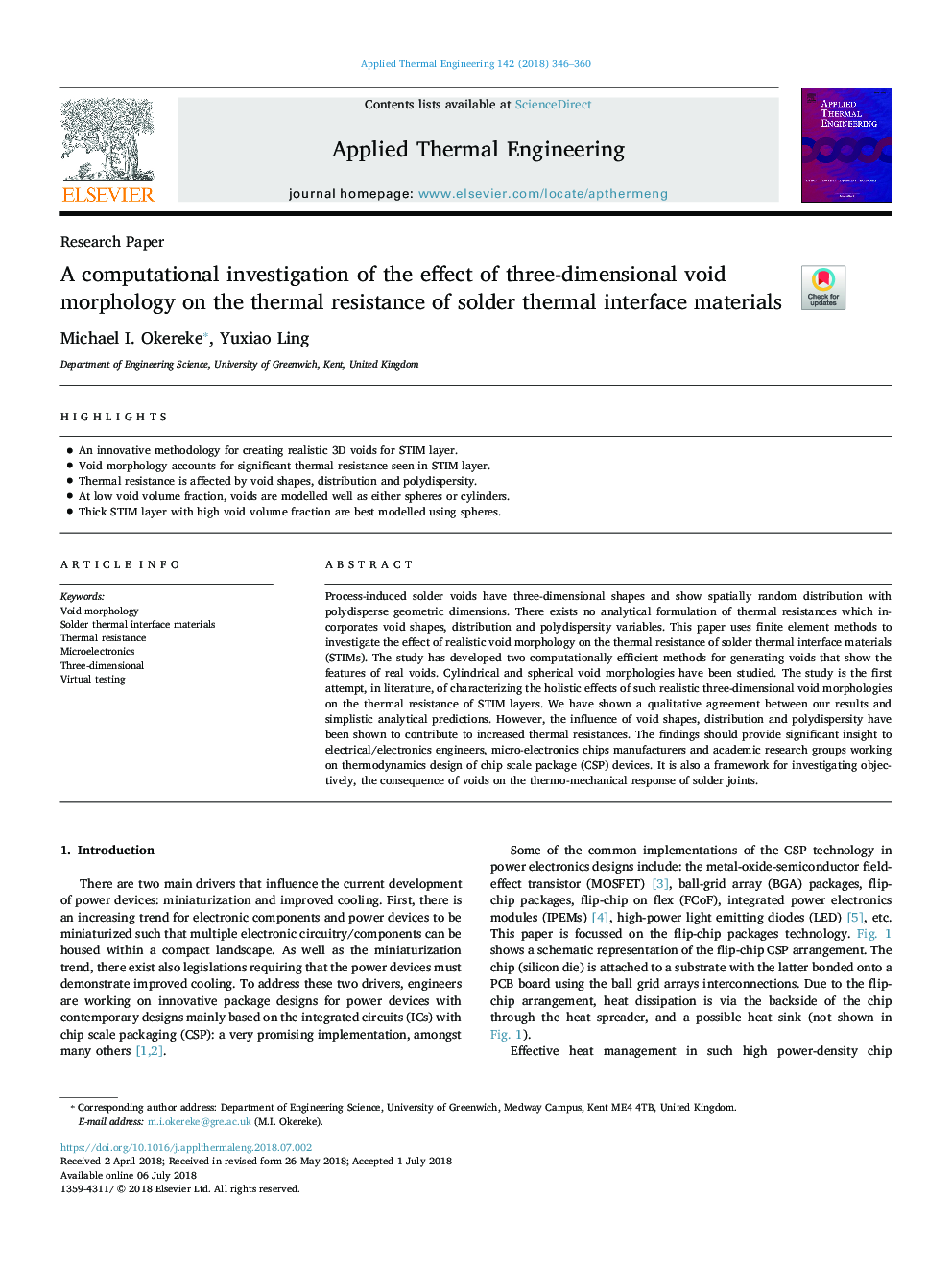| Article ID | Journal | Published Year | Pages | File Type |
|---|---|---|---|---|
| 7044800 | Applied Thermal Engineering | 2018 | 15 Pages |
Abstract
Process-induced solder voids have three-dimensional shapes and show spatially random distribution with polydisperse geometric dimensions. There exists no analytical formulation of thermal resistances which incorporates void shapes, distribution and polydispersity variables. This paper uses finite element methods to investigate the effect of realistic void morphology on the thermal resistance of solder thermal interface materials (STIMs). The study has developed two computationally efficient methods for generating voids that show the features of real voids. Cylindrical and spherical void morphologies have been studied. The study is the first attempt, in literature, of characterizing the holistic effects of such realistic three-dimensional void morphologies on the thermal resistance of STIM layers. We have shown a qualitative agreement between our results and simplistic analytical predictions. However, the influence of void shapes, distribution and polydispersity have been shown to contribute to increased thermal resistances. The findings should provide significant insight to electrical/electronics engineers, micro-electronics chips manufacturers and academic research groups working on thermodynamics design of chip scale package (CSP) devices. It is also a framework for investigating objectively, the consequence of voids on the thermo-mechanical response of solder joints.
Related Topics
Physical Sciences and Engineering
Chemical Engineering
Fluid Flow and Transfer Processes
Authors
Michael I. Okereke, Yuxiao Ling,
